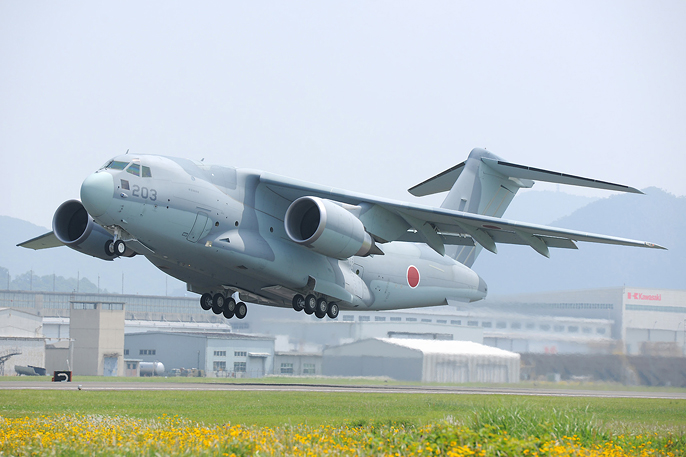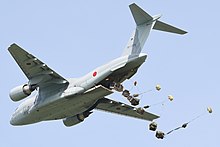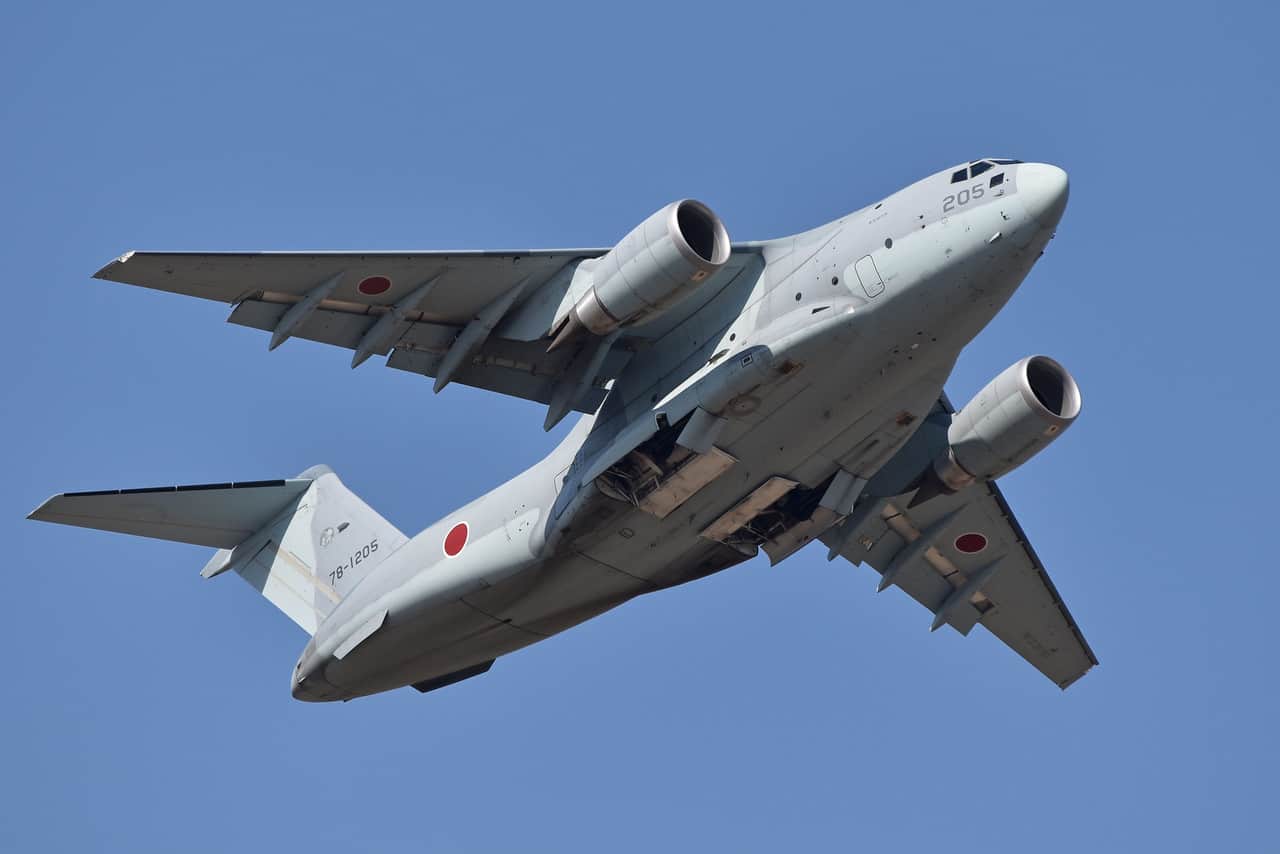The Kawasaki C-2 is a state-of-the-art military transport aircraft developed by Kawasaki Heavy Industries for the Japan Air Self-Defense Force (JASDF). Known for its impressive performance and advanced technology, the C-2 represents a significant leap in Japan’s airlift capabilities, offering versatility and enhanced operational efficiency for a range of missions.

Development and Introduction
- Origins: The C-2 was developed to replace the aging C-1 transport aircraft and to provide the JASDF with a more capable and modern airlift solution. The development aimed to meet both strategic and tactical airlift requirements.
- First Flight: The C-2 made its first flight on January 26, 2010. The development program was marked by rigorous testing and evaluation to ensure the aircraft met the high standards required for modern military operations.
- Service Entry: The C-2 entered service with the JASDF in 2016, enhancing Japan’s airlift capabilities with its advanced design and features.

Design and Specifications
- Dimensions:
- Length: Approximately 153 feet (46.7 meters)
- Wingspan: About 160 feet (48.8 meters)
- Height: Roughly 42.7 feet (13 meters)
- Maximum Takeoff Weight: The C-2 can handle a maximum takeoff weight of approximately 350,000 pounds (159,000 kilograms), making it capable of carrying heavy and oversized cargo.
- Cargo Capacity: The aircraft has a maximum payload capacity of around 70,000 pounds (32,000 kilograms). Its cargo hold is designed to accommodate a wide range of equipment, including military vehicles, helicopters, and large freight.
- Engines: The C-2 is powered by two IHI F7-10 turbofan engines. Each engine provides approximately 48,000 pounds of thrust, which contributes to the aircraft’s high performance and efficiency.
- Range: The C-2 has a maximum range of about 2,800 miles (4,500 kilometers) with a full payload, allowing it to conduct long-range airlift missions effectively.
- Crew: The aircraft is typically operated by a crew of three, including a pilot, co-pilot, and loadmaster. The cockpit is equipped with advanced avionics and flight control systems.

Capabilities and Features
- Advanced Cargo Handling: The C-2 is designed for efficient cargo handling, featuring a rear ramp for rapid loading and unloading. Its spacious cargo hold can accommodate large and bulky items, making it suitable for a variety of missions.
- Short Takeoff and Landing: The C-2 is capable of operating from shorter and less prepared airstrips, enhancing its flexibility in both strategic and tactical scenarios.
- Modern Avionics: The aircraft is equipped with advanced avionics and navigation systems, including a fly-by-wire control system. These systems contribute to the C-2’s operational efficiency and reliability.
- Enhanced Performance: The C-2’s design incorporates advanced aerodynamic features and materials to optimize performance. Its high speed and range allow it to meet the demanding requirements of modern airlift operations.
Operational Role and Capabilities
- Strategic and Tactical Airlift: The C-2 is designed to perform both strategic and tactical airlift missions. It is capable of transporting large quantities of equipment and personnel over long distances, as well as operating from smaller, austere airfields.
- Humanitarian Missions: The C-2’s versatility makes it well-suited for humanitarian and disaster relief missions. Its ability to carry a wide range of cargo and operate in diverse environments enables it to support various relief efforts effectively.
- Military Operations: The C-2 plays a vital role in military operations, including the rapid deployment of troops and equipment. Its capabilities contribute to Japan’s ability to respond to regional and global challenges.

Future Prospects
The Kawasaki C-2 represents a significant advancement in Japan’s military airlift capabilities. Its modern design and performance characteristics ensure that it remains a valuable asset for the JASDF. As Japan continues to face evolving security challenges, the C-2’s flexibility and effectiveness will be crucial in maintaining operational readiness and supporting a range of missions.
In conclusion, the Kawasaki C-2 is a testament to Japan’s commitment to advancing its military aviation capabilities. With its advanced technology, versatile design, and impressive performance, the C-2 stands out as a leading example of modern military transport aircraft. Its role in enhancing Japan’s airlift capabilities underscores its importance in both strategic and tactical operations.






